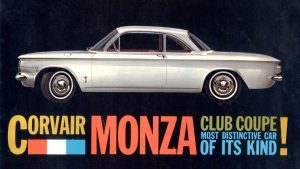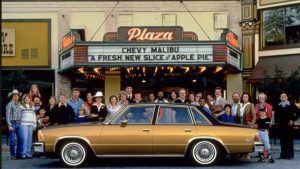
Table of Contents
Half A Century Later, It Still Turns Heads
The Jaguar was initially designed by WW2 aircraft engineer Malcolm Sayer who also engineered the famous E-Type and focused heavily on aerodynamics rather than just aesthetics. However, he died due to a heart attack in 1970 but not before penning the groundwork for the XJS.
The design of the XJS remained pretty much similar through its 21 years of production aside from a nip and tuck and a few limited editions that came with their exclusive body kits.

Most GTs these days are bloated versions of their sedan siblings that resemble nothing like the OG XJS we will be looking at today.
The long bonnet, sleek body the iconic but illegal flying buttress were staples of the XJS and formed half the reason why people bought this car other half being its silky V12. Except in Germany where you had to file a lot of paperwork before owning an XJS due to its poor rear visibility.
While in the US the XJS has twin lamp headlights rather than the Euro-spec single units, the latter is what you should get for the sake of originality.
V12 Is Where XJS Really Shines
Throughout its production run, XJS was offered in just two engine configs, the first and the most desirable is the V12. While an inline 6 is reserved for the sensible GT lovers.
The”Pre-HE” 5.3 Liter V12 was offered from 1975 to 1981 mated to a lethargic Borg Warner suto or a 4-speed manual. It made 285hp and 300 lb/ft thanks to a copycat of the Bosch Jetronic injection made by Lucas under license. The same engine was also found in Daimler Double 6 and Panther offerings like De Ville and J.72.

Unfortunately, V12 had a bad start due to Arab Oil Embargos which led to a surge in gas prices. To cater to the new frugal-minded buyer JAG introduced the new HE V12 which had the patented “Fireball” combustion chamber designed by Swiss racing driver Michael May.
The design used a special combustion chamber located around the exhaust valve in which charge compressed by the piston went via the channels located near the intake valve leading to a more stratified combustion and a 50 percent increase in fuel economy thanks to leaner AF charge.
The XJS is equipped with the new 295 HP HE V12 came with a new wood veneer, starfish alloy wheels, and Pirelli tires. The improvement seemed to have worked in favor of ailing XJS sales which jumped to 3000 units per year compared to 1000 for the Pre-HE cars and made it one of the most sought after cars of the 80s.
1991 saw the peak of regular production of V12 after the XJS got its final facelift as the displacement was now increased to 6.0 L with 304 hp on tap thanks to a new spark plug and injection system mated to a redesigned 4-speed automatic.
V12 is good but the 4.0 AJ16 Ain’t No Slouch
XJS equipped with V12 was brimming with character but had an abysmal fuel economy of just 8 MPG during a spirited driving session. Sensing the need for a more sensible engine, Jaguar introduced the AJ series of inline 6s for those looking for a bit more sincere gas consumption.
The first XJS inline 6 was introduced in 1983 right alongside its targa top-ish convertible variant the XJ-SC. It was a 3.6 L affair and made 221 hp (201 hp with cats) and 240 lb-ft. Power dropped by half compared to its V12 brother but so did the fuel consumption.

In 1991 the Inline 6 got a major upgrade and now displaced 4.0 L making about 245 hp and 289 lb-ft, perfect for highway cruising. The manual was drooped and 4 Sped automatic became the sole option for both engines.
The 4.0 “AJ16” was the final version of the XJS inline 6 and came with coil-on-plug distributorless ignition, revised engine management systems, magnesium alloy valve covers, and revised piston design. The inline 6 version of the XJS has a telltale central hood scoop indicating that the buyer loves penguins.
Even Princess Diana & Sultan Of Brunie Had One

XJS had plenty of special editions like –
- Hess & Eisenhardt convertible– US coachbuilders Hess & Eisenhardt offered a custom-powered top featuring an unpadded roof for deeper recession and cleaner body lines, steel members, separate fuel tanks, and added ballast to compensate for harmonic distortions. Only 2100 were made are highly collectible today.
- Lynx Eventer – AKA Shooting Brake XJS. Only 67 were made for a “Posh Practicality” and are ideal for those looking for a budget DBS Zagato Shooting Brake lookalike. The wagon was at one point commissioned by Paolo Gucci who wanted to make 20 more but failed due to some legal reasons, only 1 remains in the wild.
- 1987 Jaguar XJ-S V12 Cabriolet E763 KYX– The car was made especially for Princess of Wales Diana and had two additional seats in the rear for her sons William and Harry. It is now a part of the Jaguar Heritage collection.
- Jaguar XJS for the Constabulary.– Jaguar’s SVO division made some XJSs with a custom light bar and vinyl seats and livery for UK police. They didn’t catch on due to a lack of space for petty criminals and equipment.
- Jaguar XJR-S– Jaguar and TWR celebrated their win in 1988 win at the 24 Hours of Le Mans with an ultra-limited and hardcore-est XJR-S. The first 100 samples AKA “Celebration Le Mans” featured a special TWR ground effect kit, 14-inch alloy wheels, Bilstein shocks, and a leather interior.
The engine was a heavily revised 5.3 L V12 that made 318 hp. Later it was bored to 6.0 L and had a forged crankshaft, pistons, and a new Zytec ECU. Resulting in a modestly improved 328 hp. A sluggish 3-speed Auto was the only option available. Only 787 coupés and 50 convertibles XJR-S were made with only 100 destined for Stateside. - Lister XJS– Lister is like the RUF Porsche or a Dinan BMW, pushing the stock engine as much and as hard as they can. Lister Jaguar XJS came with a stroked-out all-new 7.0 L V12, Koni shocks, bigger brakes, and Recaro seats.
It made about 500 hp and could do 200 mph all day long. Those not bound by ethics and morality also chose the Le Mans package which added a 6-speed Manual and a twin supercharger kit for an industry-killing 600-hp - Jaguar XJS Monaco– Famous for being part of the never-ending Sultan Of Brunei’s car collection, the XJS Monaco was designed by PBB Designs headed by Paul Bailey. It had new sheet metal, a longer hood, and Bilstein shocks, only 12 were ever made.
Should I Buy One?
Not every used XJS buyer is gonna enjoy breaking out their tool kit every weekend trying to fix one thing or another in their beloved V12 GT. (Unpopular Opinion: I think DIY fixes are a big part of owning any vehicle and form an unbreakable bond you form with your car as long as the DIY stuff doesn’t happen every other day.) Here are some things you should keep in mind before buying a used XJS.
- Fuel Economy and XJS are never used in the same sentence. Expect 15 MPG combined and 8-10 MPG when leaving Cars & Coffee.
- Jaguar started galvanizing XJS only post-1981. Pre-1981 XJS are extremely prone to rust in areas like wheel arches and near door hinges.
- All XJS with V12 has ideal oil pressure between 4-50 PSI. Anything less demands a full engine inspection.
- Owning a 12 Cylinder is like juggling 12 balls at once, 11 too many. Do check plugs and coils for an indication of misfiring which can be hard to spot and is easily mistaken for V12 rumble.
- V12 developed a timing belt noise after 100,000 miles which is okay as long it’s only the belt that’s making the noise. Inlines 6s though are a completely different story and warrant a belt replacement.
- All XJS had IRS or Independent Rear Suspension. Check all the suspension bushings including the one underneath the tranny.
- Inspect the soft top, dashboard, foot-well, and A-Pillar trim for any signs of dampness and mildew.
- Most low-priced examples of XJS will require some DIY stuff, hence not recommended for newbies and wrench haters.
- Electricals are built to last. Regular cleaning of grounds and connectors will ensure the same.
- XJS equipped with a problematic OPUS Ignition system was replaced with a much more reliable Lucas unit, which was succeded by a Magneti Marelli system.
- V12 begs for top-notch cooling solutions. Coolant should be replaced every 18 months and top up as frequently as you can, keep a couple of bottles handy.
- XJS treated as garage queens can develop rusty fuel tanks that can clog and puncture fuel pumps and hoses.
- Most V12 were automatics and Inlines 6s came with Getrag Manual. Conversion kits for Manuals are available from Simply Performance and could set you back around $5,000 including labor
How Much a Used XJS Will Set Me Back?
On Carfax used V12 XJS were around $9,000 to $15,000 with 60k to 100K miles on the clock. The XJS with 4.0 AJs is $ 3K to $ 4K extra due to low maintenance and a good rep for reliability.
Those listed on Classic cars were around $50,000 but came with a complete vehicle history and were in excellent condition. Sweet Spot is around $15,000 for XJS that require a little cosmetic work and have a well-kept V12.






